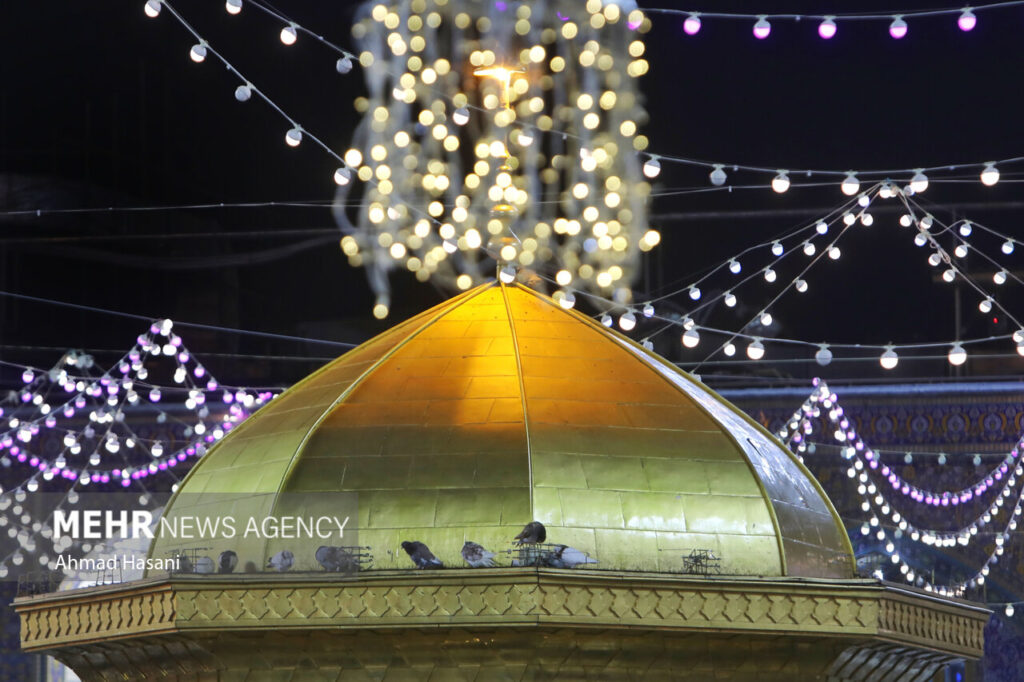Ali Ibn Musa al-Rida, also known as Imam Reza, was a descendant of the Prophet Muhammad (Pbuh), and the eighth Imam of Twelver Shia Islam took over his father Imam Musa al-Kazim (As).
On the anniversary of Imam Reza (AS), many Muslims around the world will make pilgrimage to the sacred temple of Imams in Iran.
Life of Imam Reza
Imam Reza (AS) was born on Thursday or Friday, and Zul Kada11 was born in the year 148 AH in Medina, today in Saudi Arabia.
His beloved father, Imam Musa Ibn Jafar (AS), named him Ali. He was divinely qualified entitled Al-Reza (meaning that Allah and his messengers were deeply pleased with him), and his Agnomen was Abu Hasan.
His grand age of Imamato began at 183 AH when he was 35 years old, and he held that divine position for about 20 years.
The three Abbasuid caliphs were his contemporaries. Haan al-Rashid for the first 10 years, then 5 more years Amin, and finally the last five years Mamun.
When the Imam acquired Imam, the political government was run by Haroon al-Rashid of Baghdad. After a few years, due to the style of rules exercised by this Abbased Caliph, which was merely a compulsion on the people, the government of Haroon al-Rashid began to lose power due to many rebellions against him. In that situation, Imam Reza (AS) published his Imam in Medina and worked to solve problems related to people’s social issues and beliefs.
The life and Imamate era of Imam Reza is an era of peak trends in the Ahl al-bayt of unfallability and purity, and those who are heading towards expanding their popular foundations.
Iran’s Imam Reza
Hazrat Reza’s Imamate period lasted 20 years, of which 17 have been spent in Medina and the past three years in Khorasan, Iran.
After Haroon’s death, his son Mamun came to power and became the caliph.
Shiites of that era continued to view Imam Reza as the leader and caliph of God. Therefore, Abbasid Caliph feared the Imam (AS), who was publicly recognized as the successor to Allah’s messenger, so he decided to invite Imam Reza. He wanted to show that his government was approved by Imam Reza (AS) by stationing him in his court.
Initially, Imam Reza (AS) did not accept this so-called invitation. Later, when the invitation turned into a threat, the Imam forced a trip to Horasan at 200 AH. Imam Reza (AS) explicitly showed his dissatisfaction with such powerful migration.
When Imam Reza (pbuh) realized he had been forced to travel, to express his dissatisfaction with this trip, he visited the holy temple of the Holy Prophet (pbuh) several times and made a pilgrimage in a way that everyone understood that not everyone was the satisfaction of the Imam.
After that, the Imam called out all his relatives and friends and said to them, “Cry for me! I will not return to Medina.” This shows that Imam was familiar with Mamun’s ominous plans, but he had no choice but to accept his decision.
When Imam Reza (AS) finally reached Marv, the capital of Mamun, he was welcomed by Ma’mun himself and some prominent Abbasid Nobles.
Mamun initially offered the caliphate to Imam, but the Imam seriously rejected his proposal, saying, “If caliphate is your right and Allah chooses this position for you, you have no right to provide this responsibility to others. You cannot resign from the position Allah has assigned you. Nevertheless, if the caliphate is not your right, you have no authority to provide me with anything that is not yours.”
Mamun then suggested that Imam accept the heirs’ app. Imam also declined the proposal, but he was finally forced to accept it.
But before that, the Imam submitted certain conditions to prevent interference in the matters of the government or the appointment or dismissal of government agents.
Imam Reza Maltam
When all of Mamun’s tricky plans failed and saw Imam Reza (AS) becoming increasingly popular and loved, he decided to poison the Holy Imam (AS).
Mamun poisoned the Imam with grapes or pomegranates, and as a result, the Imam achieved martial teaching at 203 AH.
He was buried in Tooth (Mashad, Iran) and his magnificent shrine.
Imam Jawad (AS), son of Imam, washed his father’s body and prayed for him, but he was not openly aware of it. Imam’s body was buried in Mashhad among many companies of his Shiites and followers, and the sacred shrine of Imam Reza (pbuh) has been the cause of the blessings and honor of the Iranians for centuries.
Imam Reza Shrine in Mashhad
The sacred shrine of Imam Reza is Iran’s most important, most important and most prominent religious centre, representing the characteristics of Persian and Islamic architecture. Many pilgrims from Iran and around the world visit Imam’s shrines every year.

The sacred shrine of Imam Reza is a complex of shrines, courtyards, porches, museums, libraries, four seminaries, cemeteries, Islamic science university, dining hall for pilgrims, vast prayer halls and other buildings.
The Goharshad Mosque is a magnificent congregation mosque built during the Timrid era in Mashhad, Razavi Khorasan province of Iran, and now serves as one of the prayer halls within the Imamreza Shrine complex.
The fascinating beauty of the mosque, the oldest mosque in Mashhad, has made it one of its cultural, historical, religious tops and religious charms.

The work of mirrors is part of Iranian art and a subset of architectural decoration. The history of this art in Iran dates back to the Safavid period and then became one of the most popular arts during the Kajal period. As a result, Mashhad quickly became one of the mirror work sites by the shrine of Imam Reza (AS).
At the shrine of Imam Reza (AS), many places and portico are decorated with beautiful and diverse mirrors.

MNA/

